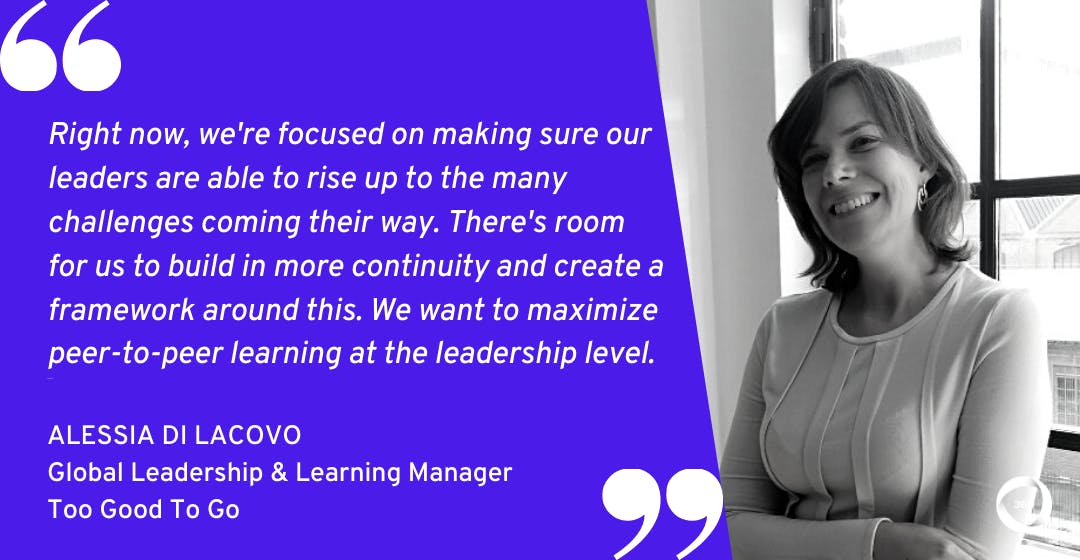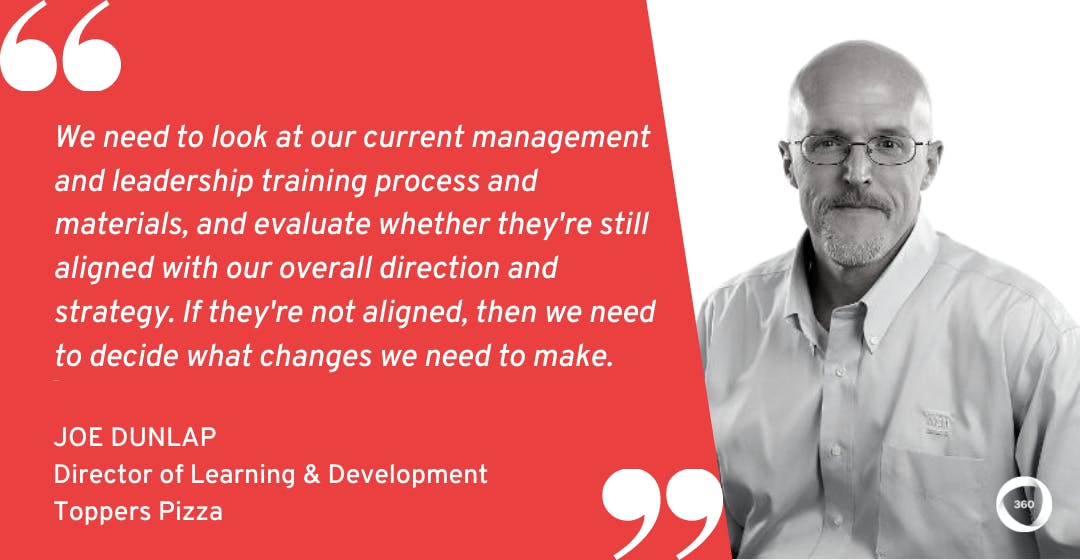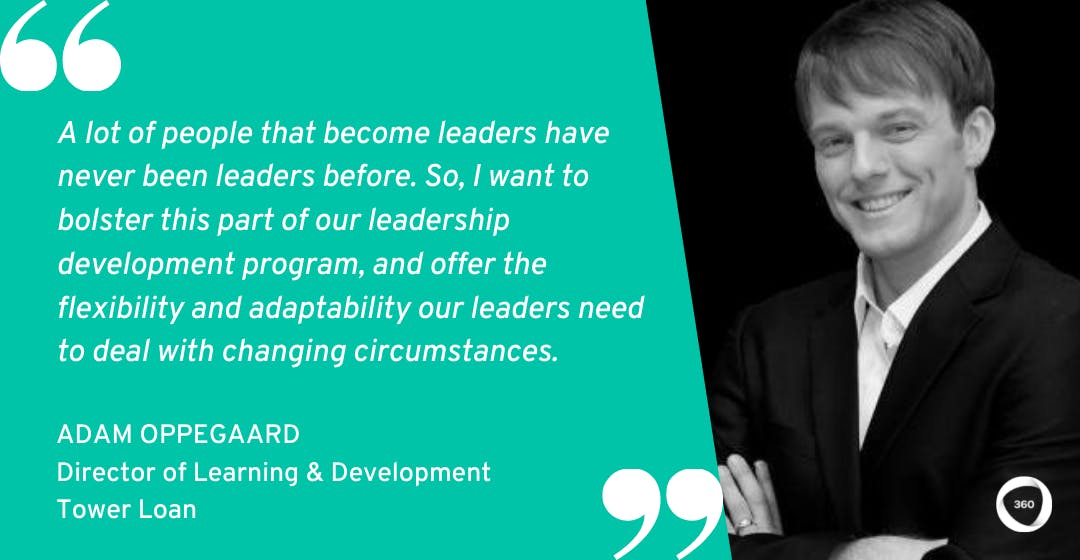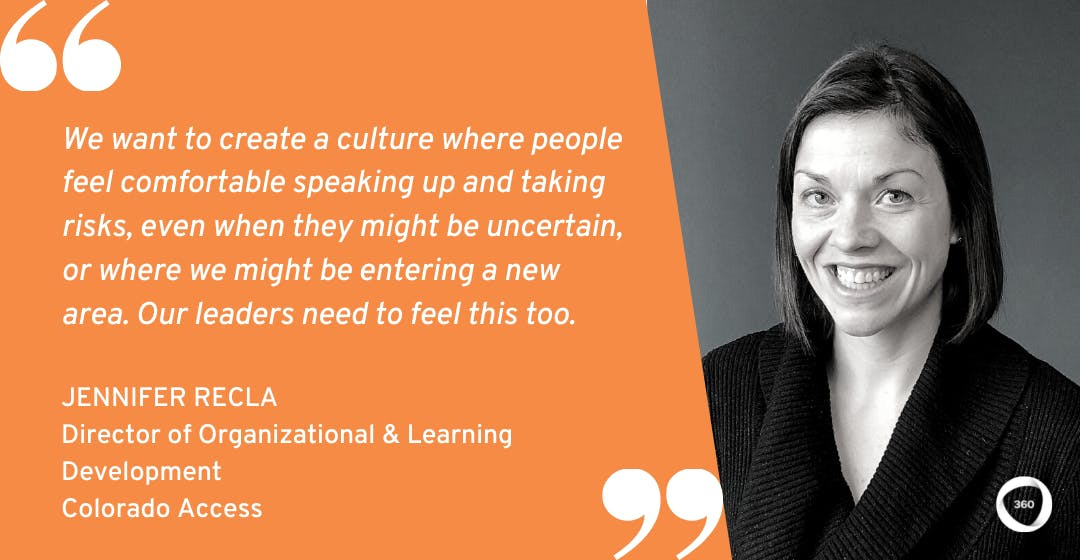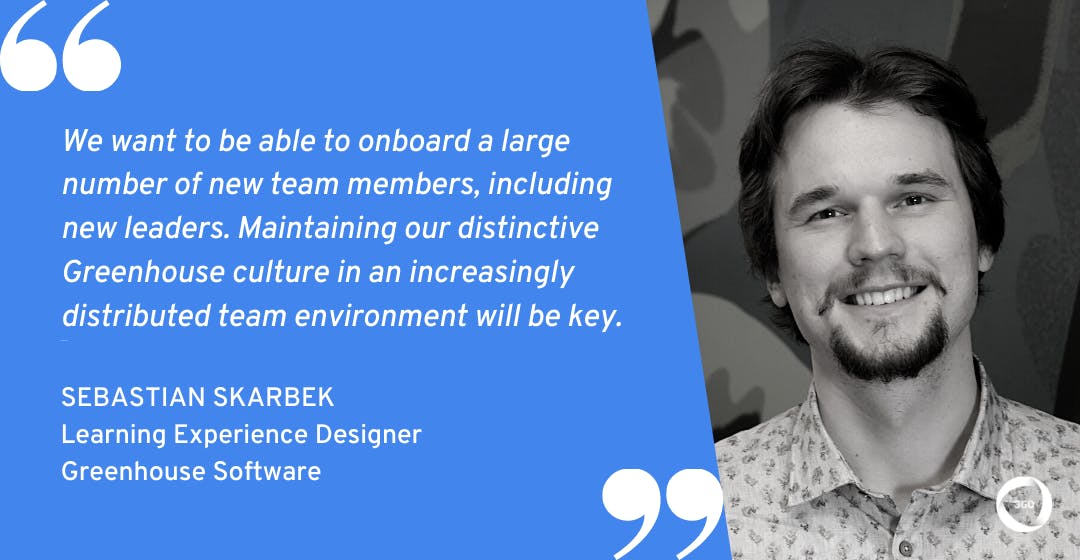L&D teams everywhere play a key role in curating subject-matter expertise, helping teams collaborate on learning projects, and providing resources for people to grow. This isn’t limited to the teams working on the ground, either: L&D teams also support leadership development.
But when every leader has different learning needs and aspirations, how can we make sure we’re offering the support they need? We don’t talk enough about this, but today we’re going to.
As part of our CLO Connect series, we asked five leading L&D experts to break down exactly how they support company leadership to grow and thrive. From aligning management training with business strategy to creating an environment of psychological safety, here are five great ways L&D teams can support leadership development.
Let’s get started with a fundamental tip: ensuring consistency in leadership training.
#1: Creating greater consistency in leadership development
As Alessia Di lacovo, Global Leadership & Learning Manager at Too Good To Go explains, creating a sense of continuity and consistency in leadership training is critical–especially in times of change and challenge.
“Right now, we’re really focused on leadership development at Too Good To Go, and making sure our leaders are able to rise up to the many challenges coming their way,” she says. “There’s room for us to build in more continuity and create a framework around this. We really want to maximize the amount of peer-to-peer learning at the leadership level.”
“As part of this project, we’re focused on designing, or redesigning, our growth paths for the different leadership roles we have within the company. We’ve been focusing mostly on our key account growth path, which is the most relevant and top of mind topic, but we do have other teams and roles we want to support with consistent growth and development opportunities.”
For Alessia and Too Good To Go, this focus on consistency in leadership development is all about using peer learning, but adjusting this peer learning to fit particular needs. “I still think peer learning has to be a big part of it, but the question is how do we adjust it to the different needs and challenges within particular roles.”
Next up, another fundamental step: aligning management training with business strategy.
Related: How We Use Peer Learning to Keep Our Company’s Competitive Edge
#2: Aligning management training with business strategy
For Joe Dunlap, Director of L&D at Toppers Pizza, supporting leadership development is all about aligning management training with business strategy. As he explains, this is especially critical given Toppers Pizza’s ambitious plans for growth.
“Right now, we’re focused on growing our store presence, which means increasing the talent in our talent management pipeline. To do this, we need to look at our current management and leadership training process and materials, and evaluate whether they’re still aligned with our overall direction and strategy as an organization. If they’re not aligned, then we need to decide what changes we need to make.”
For Joe and Toppers Pizza, this process of alignment takes access to the right information. “It’s about looking at the data available to us to help move the right people through the management pipeline at the right pace,” says Joe. “That way, when people are ready to become a manager, a franchisee, or step into another leadership role, they’re fully prepared for that.”
“It also takes the right focus on workforce enablement. We want to open up more channels for everyone across the organization to share their ideas, not just operationally but personally. We want to find new topics and suggestions, connect people through dialogue, and help people commit to continuous learning–including our leaders and managers.”
So, consistency and alignment with business strategy is key in supporting leadership development. But what about building in the right element of flexibility?
You can never have enough expert insights! Check out our ebook to find out How L&D Can Help You Build a Strong Company Culture
#3: Focusing on adaptable leadership skills
As Adam Oppegaard, Director of L&D at Tower Loan explains, great leadership training takes the right element of adaptation–especially when markets are moving fast.
“At Tower Loan, we’re really focused on flexibility and adaptability in leadership training,” says Adam. “We’re moving fast right now, and we expect our leaders-in-training to move fast, too. This means learning the nuts and bolts of the organization over seven to ten months.”
“A lot of people that become leaders have never been leaders before. So, I want to bolster this part of our leadership development program, and impart upon them the flexibility, analysis, and adaptability our leaders need to deal with new or changing circumstances.”
For Adam, this focus on adaptability within leadership development isn’t easy–but it’s critical. “We need to help our leaders know how best to approach a particular team, or a particular team member, and to keep them motivated and engaged. It can be quite nuanced and tricky to know how to do this, but it’s key to the training outcomes we’re focused on.”
One other thing that’s often overlooked in leadership development? How to make your leaders feel safe and comfortable in the training.
Related: Your Manager Training Wasn’t Working Before–Now It’s Really In Trouble
#4: Creating an environment of psychological safety
As Jennifer Recla, Director of Organizational & Learning Development at Colorado Access says, it’s important for every learner to benefit from an environment of psychological safety when they’re training–and this includes leaders, too.
“One of our big focus areas is around psychological safety,” says Jennifer. “We want to create a culture where people feel comfortable speaking up and taking risks, even when they might be uncertain, or where we might be entering a new area. Our leaders need to feel this too.”
For Jennifer, this environment of psychological safety is critical to Colorado Access’s culture of innovation. “The more research I do on skills related to innovation, the more I understand the importance of creating an environment where people feel comfortable admitting mistakes and looking at them as learning opportunities.”
“We want people to feel comfortable raising their hands and saying, ‘this doesn’t look right’, or, ‘this doesn’t feel right’. We want to build this foundation of psychological safety, because it’s so important for our innovation work, and for the effectiveness of our leaders and our teams.”
Finally, we have one last crucial way to support leadership development in today’s world: know how to translate your company’s distinctive culture to a remote environment.
#5: Translating your distinctive culture to a remote environment
As Sebastian Skarbek, Learning Experience Designer at Greenhouse Software explains, it’s key for leadership training to incorporate a distinctive sense of company culture–especially when so many of us are still working in a remote context.
“We’re growing very quickly, and like many companies, a lot of our key development areas are about addressing the dynamic landscape we’re in right now. We want to be able to onboard a large number of new team members, including new leaders. Maintaining our distinctive Greenhouse culture in an increasingly distributed team environment will be key.”
“As we think about working efficiently and scaling, we’re looking at a few new ways of making strategic guidance more available. Our goal is to use that guidance to influence our interactions with customers in new formats. This is key for our leadership development too.”
Related: 6 Steps to a Great Remote Onboarding Process–and What to Avoid
Use these 5 tips to support your leaders to achieve
In L&D, it’s important to remember that leaders are learners, too. They have their own particular learning needs and aspirations, their own weak spots, and their own goals. As L&D leaders, it’s up to us to match these goals and aspirations with the right support and resources.
Getting this right takes a mix of consistency, adaptability, and alignment with business strategy. You also need to make your leaders-in-training feel comfortable and safe–and in 2021, you need a way to translate your distinct organizational culture into a remote environment.
So, consider these five tips from L&D experts, and ask yourself: is your learning strategy supporting your organization’s leadership development in the best way possible?
And if you’re looking for more inspiration on how to support your leadership teams and beyond, our #CLOConnect interview series has got you covered. Each week, I interview a new L&D leader to find out how they’re driving better learning outcomes by connecting their teams and unlocking subject-matter expertise. You can subscribe (below 👇) to our weekly newsletter to receive our latest posts directly in your inbox.
Thanks again to our five L&D experts, Alessia, Joe, Adam, Jennifer, and Sebastian, for being so generous with their tips and insights!


